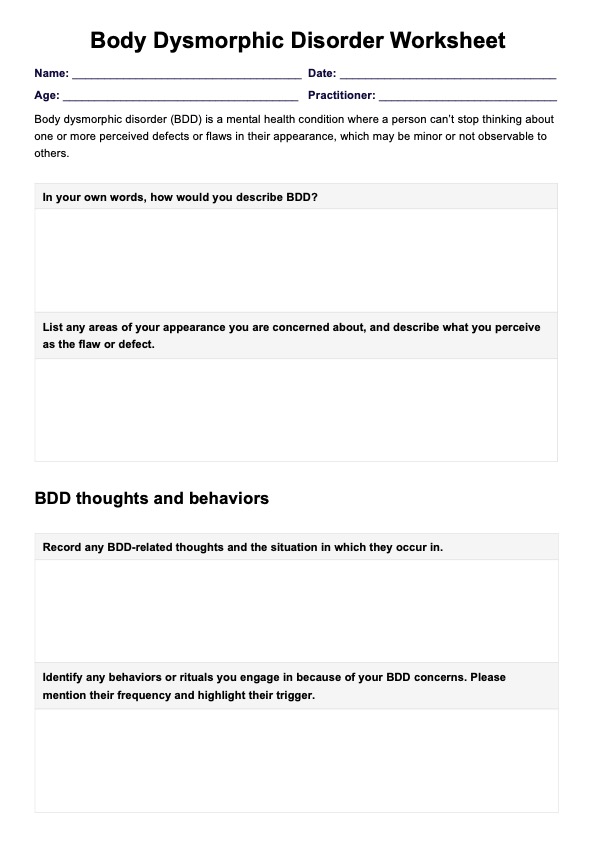Yes, body dysmorphia significantly affects self-esteem and how individuals perceive themselves, often leading them to see flaws or defects in their appearance that are not noticeable to others.

Body Dysmorphic Disorder Worksheets
Learn more about body dysmorphic disorder. Get access to a free Body Dysmorphic Disorder worksheet for your mental health practice.
Body Dysmorphic Disorder Worksheets Template
Commonly asked questions
Body dysmorphic disorder is caused by genetic, neurobiological, environmental, and psychological factors. It often co-occurs with other mental health conditions, such as low self-esteem, anxiety, and depression.
People cope with body dysmorphia through therapy, medication, self-care practices, exercises, and support groups. Cognitive-behavioral therapy (CBT) is especially effective in addressing symptoms and promoting positive body image characteristics.
EHR and practice management software
Get started for free
*No credit card required
Free
$0/usd
Unlimited clients
Telehealth
1GB of storage
Client portal text
Automated billing and online payments











